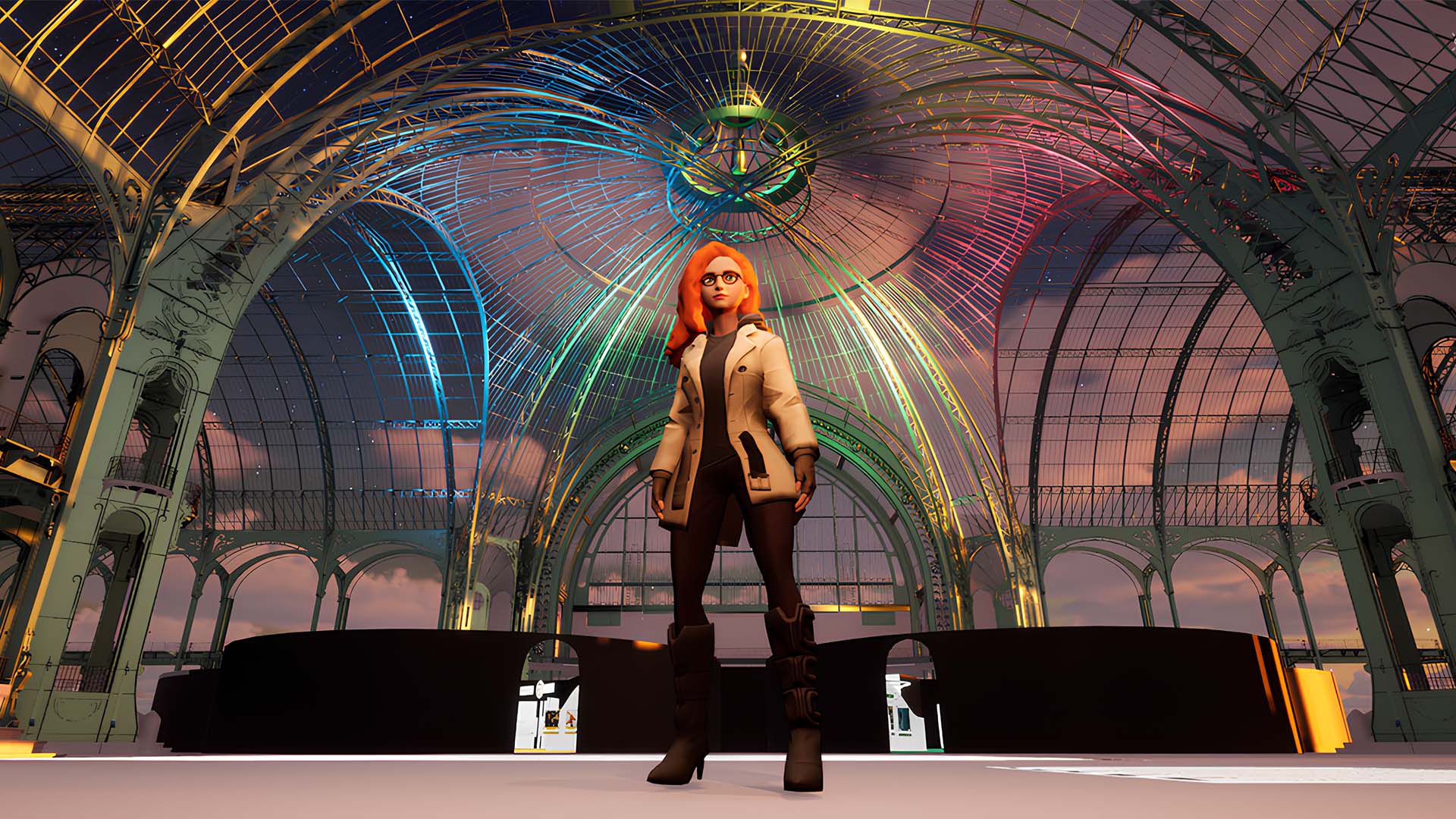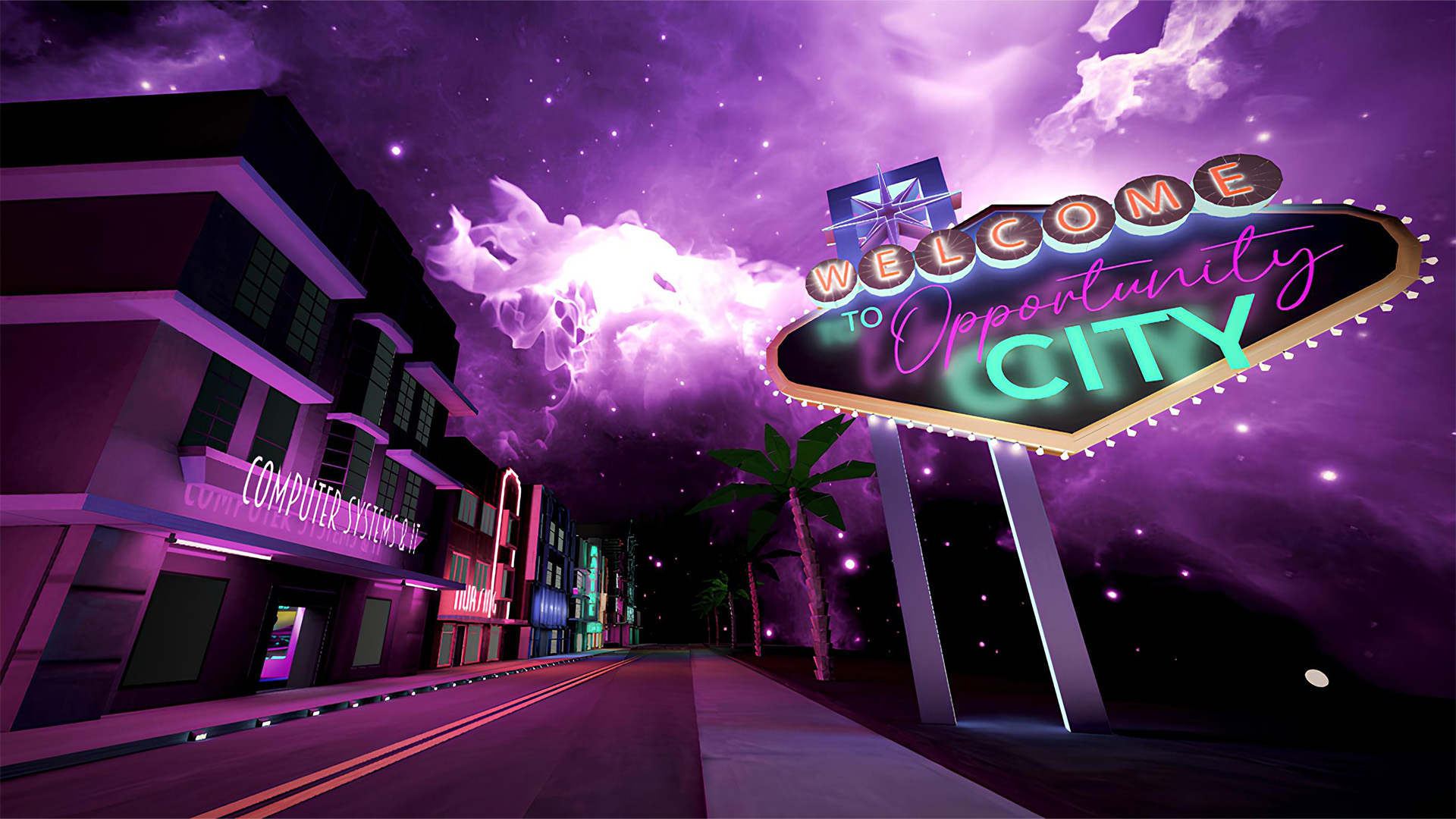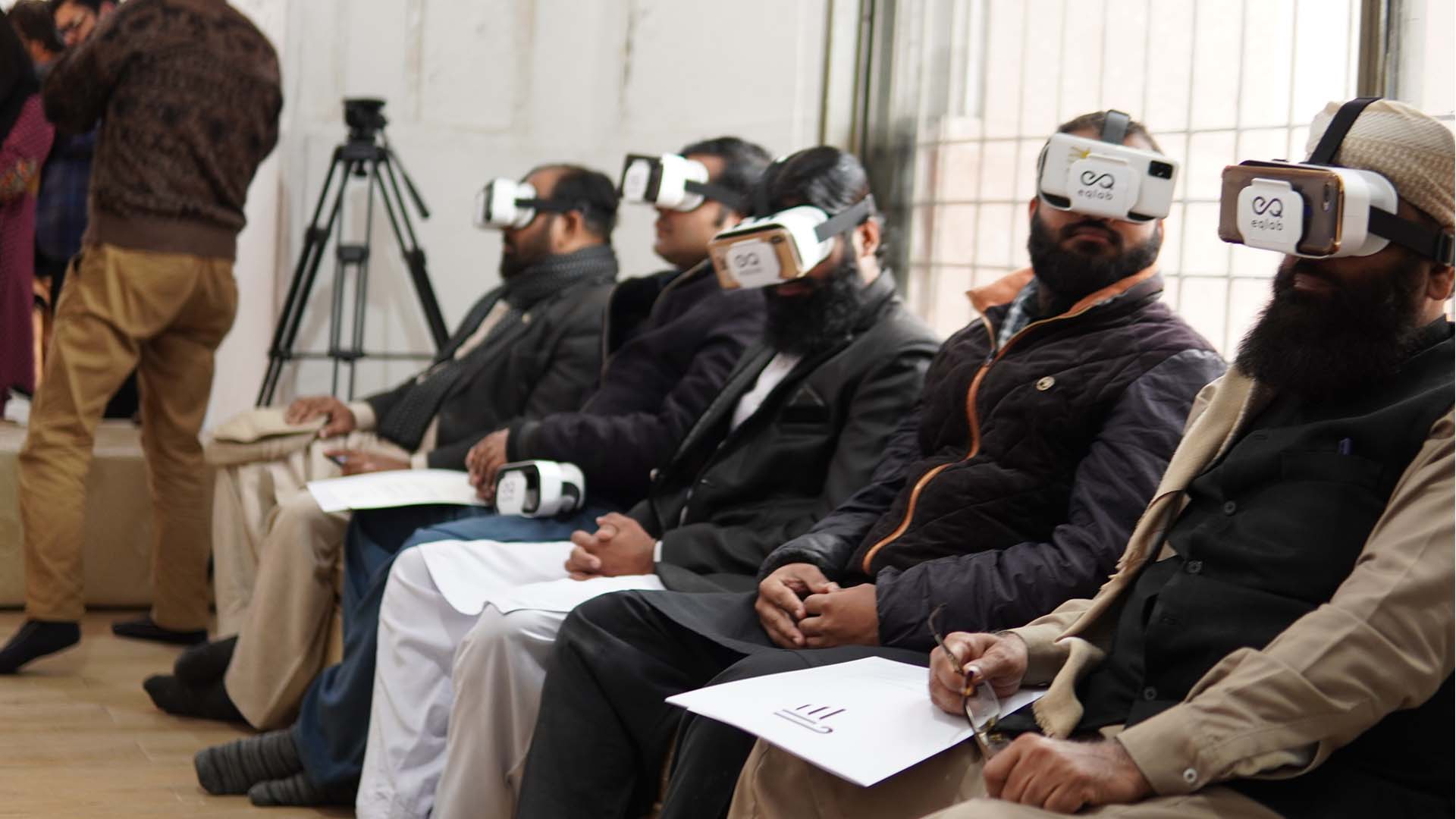Virtual Pilgrimage,Real-World Peacebuilding
Boldly Going Where No Peacebuilder Has Gone Before
After coming back from his International Space Station excursion, Japanese billionaire Yusaku Maezawa recounts experiencing the "overview effect" after seeing Earth from space for the first time: "You begin to think about world leaders getting together in space," he said. "Of course, I'm not a powerful enough person to make it happen. But if it did, the world might be a better place to live."
Holding peace talks at the International Space Station in the real world is impossible, but with the support of the US Institute of Peace, we did manage to take aspiring peacebuilders to space in virtual reality. Together with a cohort of Muslims and Christians, Father Dr. Channan, Dominican friar, and Grand Imam Maulana Abd-ul Khabir Azad, Khateeb of the world famous Badshahi Mosque in Lahore, Pakistan went to space together to hold interfaith peace talks, while earth-gazing on board of a 3D re-enactment of the International Space Station. They brought with them a hybrid cohort of a hundred religious leaders, human rights activists, promoters of interfaith harmony and Christian-Muslim dialogue, teachers, professors and students from Muslim, Christian and Hindu faiths in the city of Lahore.
Astronauts call this the "overview effect", this feeling of awe and wonder when they first see the earth from space for what it is: a pale blue dot with its paper-thin atmosphere, lost in the immensity of space. They unanimously recount experiencing an increased sense of purpose, brotherhood and humbled feeling of unity with the planet we call home. As Syrian astronaut Muhammad Ahmad Faris said, when you look at Earth from space, the “scars of national boundaries” disappear. Coming back from lower orbit, making peace between communities on earth is not a fleeting daydream; seen from this unique angle, peacemaking becomes both the visceral imperative and logical consequence directly deriving from this shared lived experience.
“It felt no less than a miracle to be able to go to space for our interfaith session.”
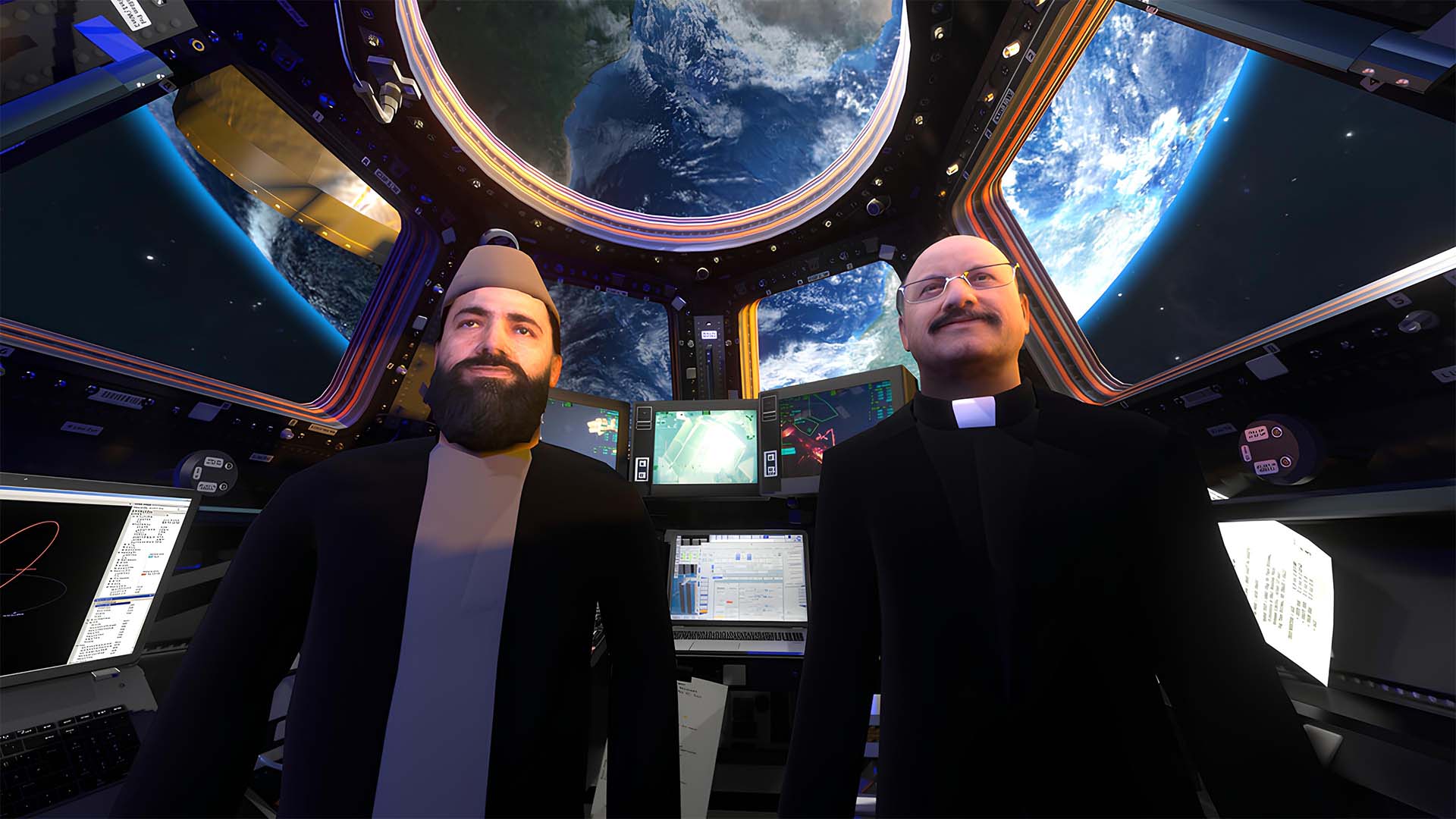
A PeaceTech Initiative Backed by Peer-Reviewed Science
With the support of the United States Institute of Peace and in close partnership with local interfaith authority figures, activists and both Christian and Muslim community leaders, EQLab, the non-profit I started, provided this virtual reality-powered interfaith peace program in 2022 to promote understanding between faiths and prevent the outbreak of religious violence in Pakistan. Academics and artists alike praise virtual reality (VR) as the game-changing medium which allows its users to walk a mile in another’s shoes and open the doors of perception.
Numerous evidence-based studies stemming from social neuroscience and cyberpsychology have shown that virtual reality can help transform our perception of ourselves and of others. What we experience in the virtual world has a lasting perceptual and behavioral impact on us in the real world, even after the virtual experience is over. Professors Mel Slater and Jeremy Bailenson have respectively highlighted the role of virtual reality in the durable reduction of racial bias and promotion of pro-social behavior. As a unique immersive medium, which allows for radical perspective shifts, virtual reality is an unparalleled tool that helps us transcend the limits of our self-centered point of view, and to adopt the perspective of another human being, including someone who doesn’t think, talk or look like us.
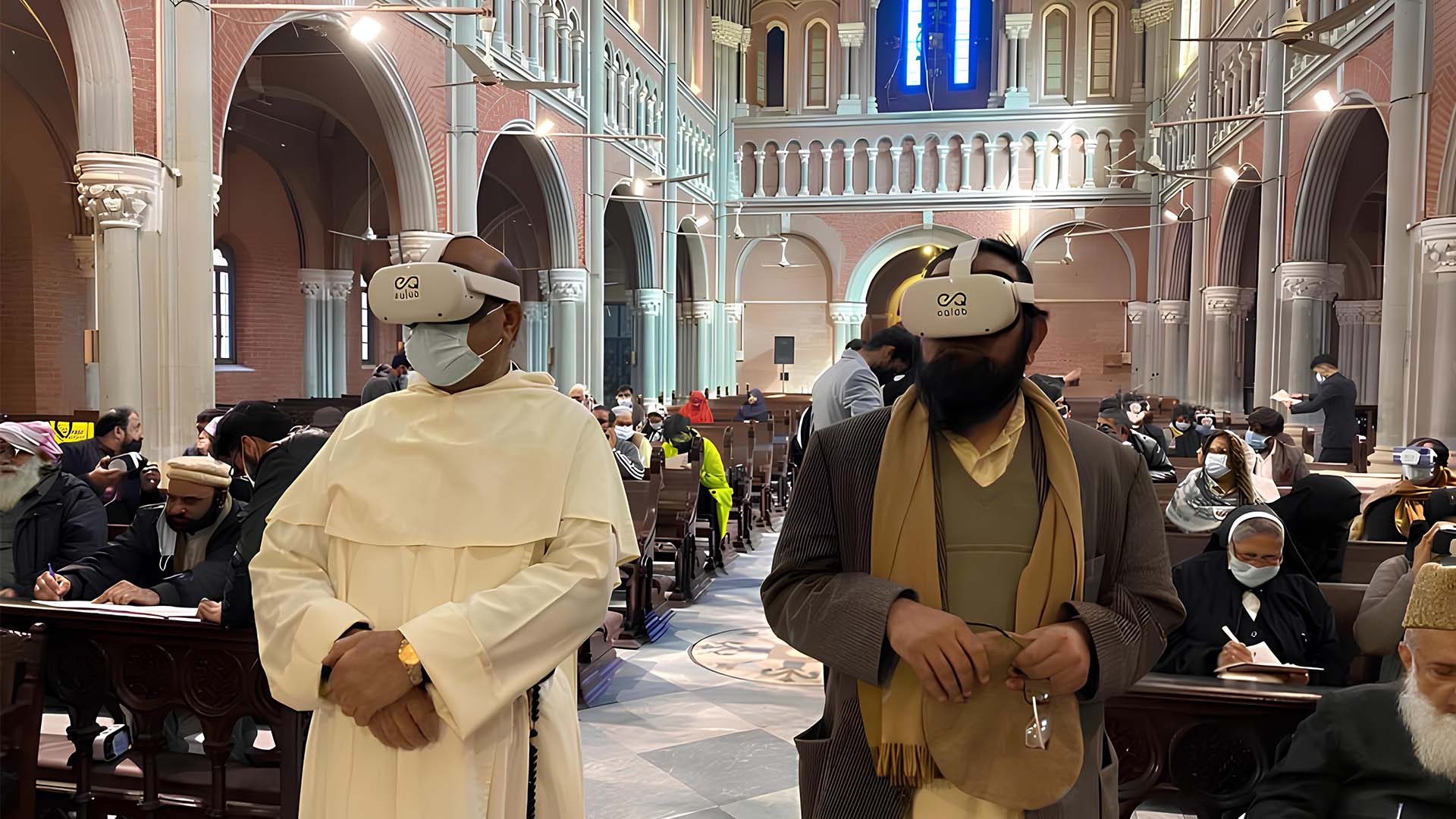
Traveling in Space and Time to See the World and Others As Never Before
In partnership with a diverse cohort of interfaith subject-matter experts in Pakistan, we developed a series of science-backed immersive environments and interactive experiences designed to foster understanding between the different faith groups involved. We then invited a socially representative cohort of Muslims and Christians to experience the different peace-oriented simulations in a series of symbolic locations across the city of Lahore, namely Badshahi Mosque and the Sacred Heart Cathedral. In each sacred site in the real world, participants then put on virtual reality headsets and traveled to sacred sites that are emblematic for both faiths, for instance the 3D re-creation of the house of Mary in Turkey and Mount Sinai, which are places of pilgrimage for both religious groups in the real world. The leitmotiv that re-appeared time and time again in the participants’ testimonials was they felt present to the different sacred sites they virtually visited together.
Together with an interfaith cohort of believers, the two Christian and Muslim leaders, Father Dr. Channan and Maulana Abd-ul Khabir Azad freely traveled together virtually to a series of emblematic places which matter tremendously to both religions, starting with Jerusalem. Muslim and Christian participants freely immersed themselves in 360° in Jerusalem, navigated between sacred sites for both faiths, the Al-Aqsa Mosque and the Church of the Holy Sepulchre, and prayed together in virtual reality in an act of interfaith peace for real-world change. Israel and Pakistan do not have diplomatic relationships, so real-world travel to the Holy City is out of the question for both Pakistani Muslisms and Christians, but virtual reality unleashes all from the worldly constraints of geopolitics and administration: “We get to travel where we always wanted to go, with no visa”, said Grand Imam Maulana Abd-ul Khabir Azad. This is exactly what immersive technology was made for: to empower individuals and communities to do what is impossible in the real world, to highlight what people have in common, and not what sets them apart, to allow for the free movement of humans, ideas and emotions beyond physical and mental barriers.
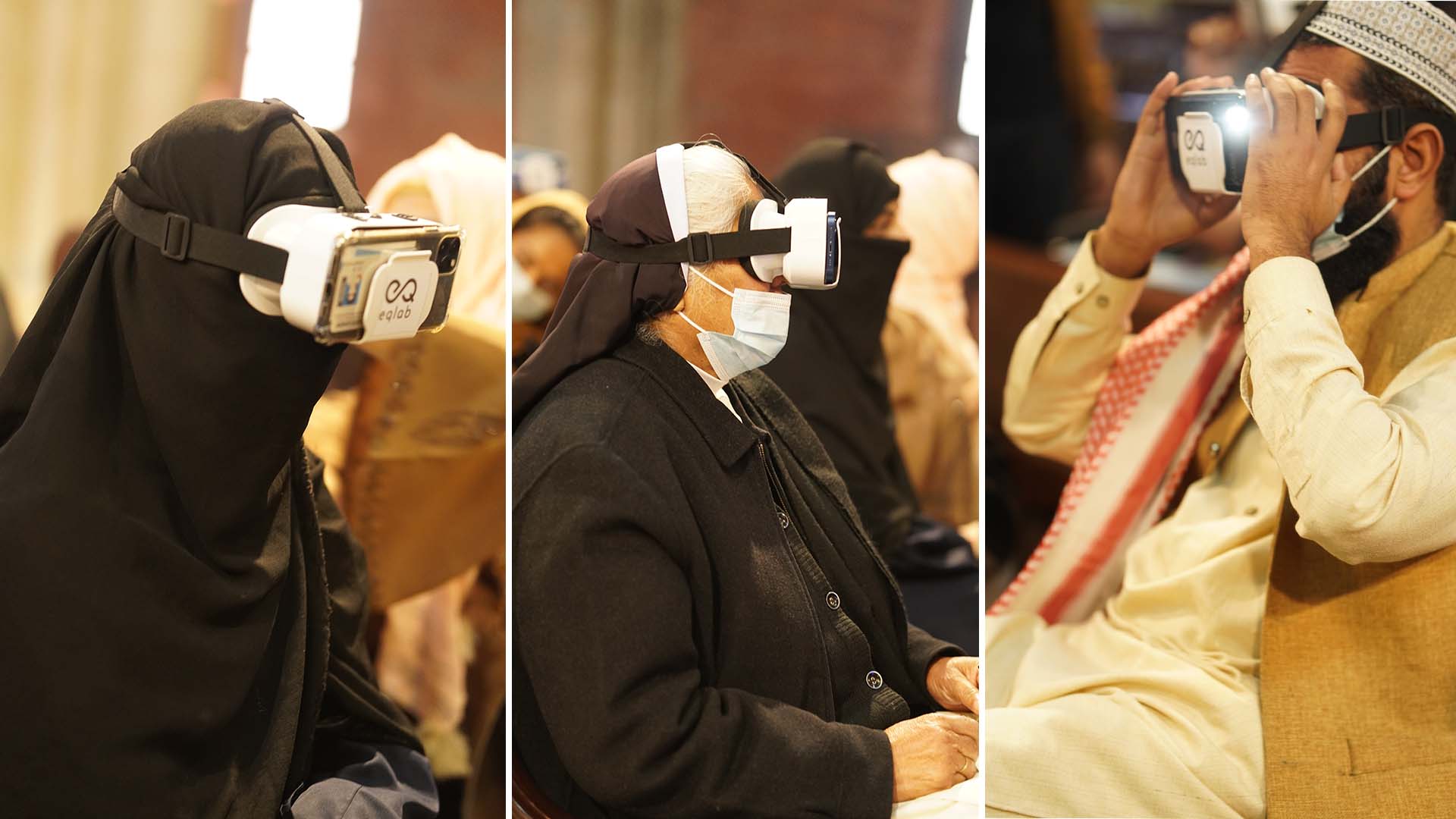
Time-Traveling to the Dawn of Both Religions in Virtual Reality
Sacred sites were either entirely re–created in 3D via computer-generated imagery and thoroughly optimized for virtual reality, or directly captured via a 360° video camera. For the first type of computer-generated virtual environments, there were really no limits to where we could take participants, so we could travel in space, and we also travel in time: participants went back in time at the dawn of both faiths on a virtual pilgrimage to the Prophet Abraham's alleged birthplace, Ur.
In March 2021, Pope Francis went to Ur, present-day Irak, where Abraham is thought to have been born, to conduct an interfaith prayer with Iraqi muslim leaders on the theme of tolerance. Because we are in 3D and no longer constrained by the limitations of the physical world, we re-built the ziggurat of Ur as it was projected to look like in 2nd millenium BC at the time where the Prophet Abraham was born. Participants were guided in an interfaith prayer and discussion on the theme: “We are Sons and Daughters of Abraham” as an expression of unity and peace between the two Abrahamic religions. In virtual reality, “Our minds and hearts were connected and felt like one”, said one of the participants. Christians and Muslims were able to consider the relationships between the two Abrahamic religions from a unique vantage point: by teleporting at the dawn of both faiths, at a point in time before there was ever a division between the two.
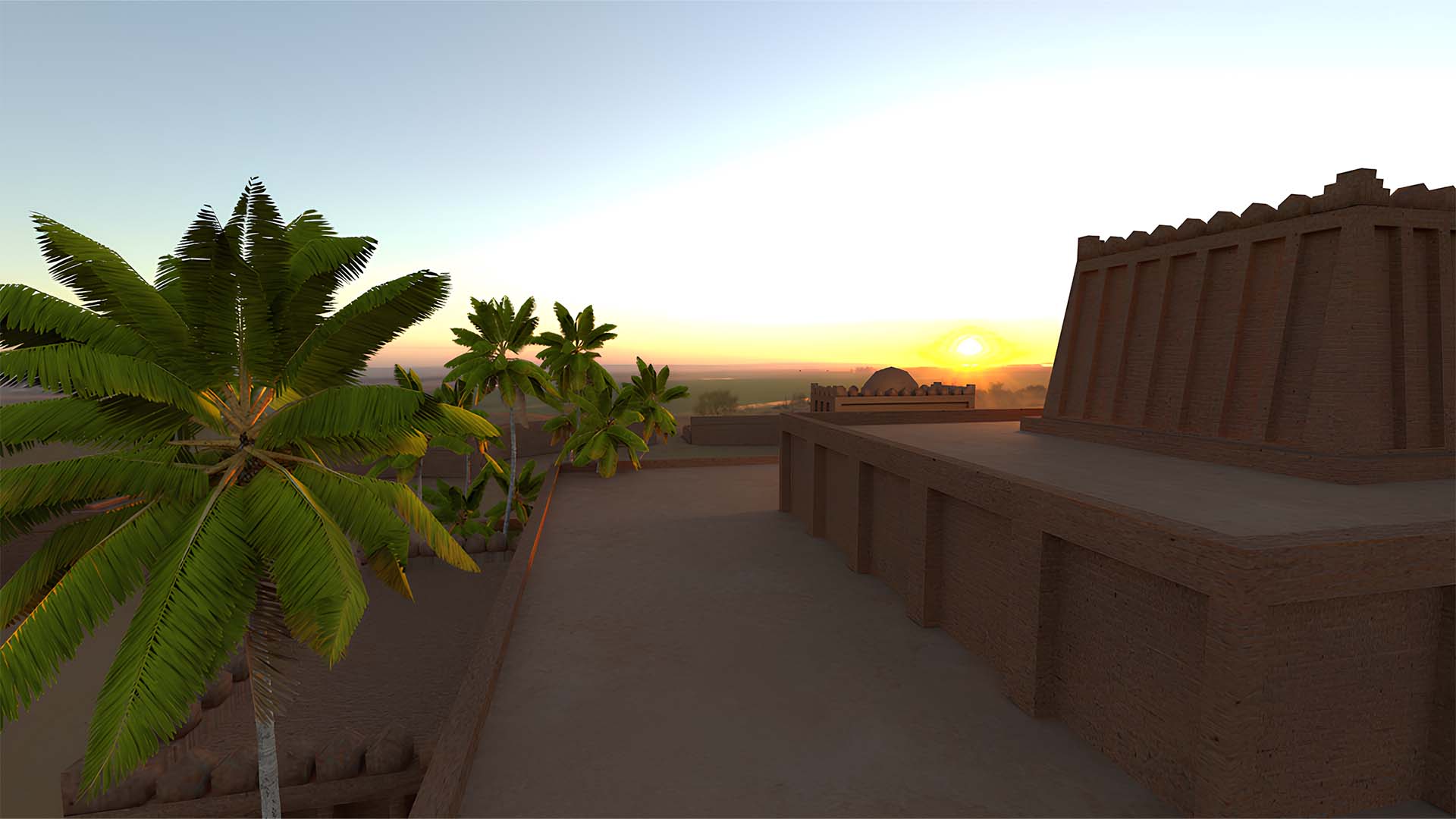
where Muslims and Christians virtually visited to reflect on their common roots
Immersive Tech Can Make Peace Talks Experiential and Visceral
Social media has been instrumentalized to spread misinformation, trap us in filter bubbles reinforcing our confirmation bias and coordinate online violent and extremist campaigns that resulted in extremist violence in the real world. The metaverse, as a social network of immersive interconnected spaces, is the direct evolution of social media. What will it be used for? Will it be wielded as a weapon to polarize us or harnessed as a tool to help us overcome our biases and bring us closer together? It’s up to us to decide. We are barely scratching the surface with the initial implementation of this virtual reality peacebuilding program conducted in Lahore, Pakistan. Virtual reality can help us see the world through the eyes of another, see the world through the eyes of another, empower us to shift perspectives radically. We are in the position to build a peace-oriented metaverse which will make peaceful dialogue experiential, visceral and “future-proof”.
What would happen if in a not-so-distant future, world leaders could use virtual reality to conduct peace talks from space while contemplating earth for what it is: in the words of Scott Kelly,
"one spaceship, Spaceship Earth. And we’re all flying through space together, as a team, and it gives you this perspective – people have described it as this ‘orbital perspective’ – on humanity, and you get this feeling that we just need to work better – much, much better – to solve our common problems.”
Scott Kelly / Astronaut
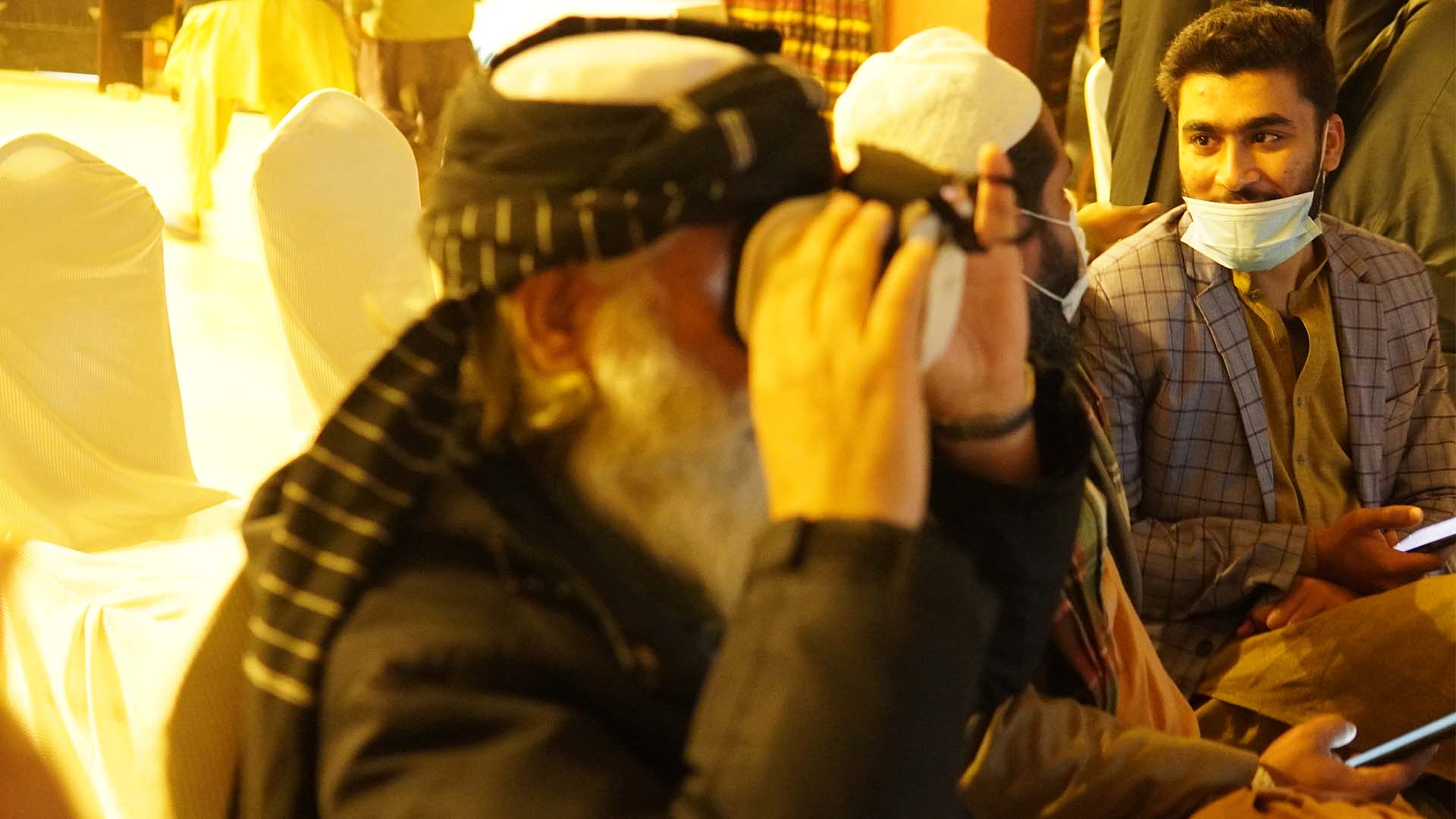
You can check out related work.
No matter the field—be it education, healthcare, or peacebuilding—I am dedicated to designing for social impact, ensuring we create environments conducive to collective well-being.
Virtually Embody the Change You Wish to See in the Real World
